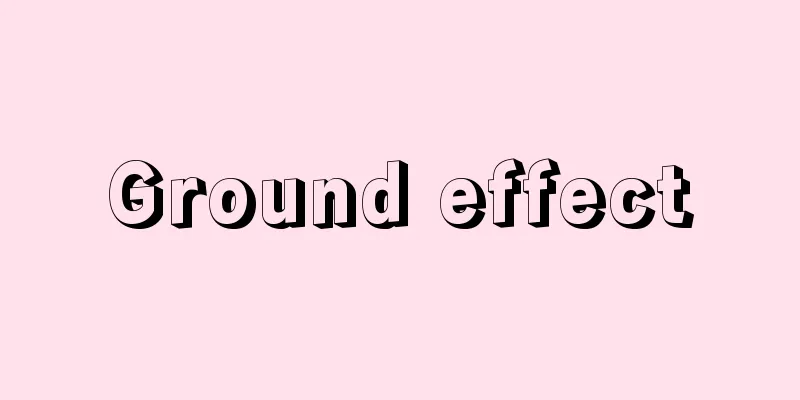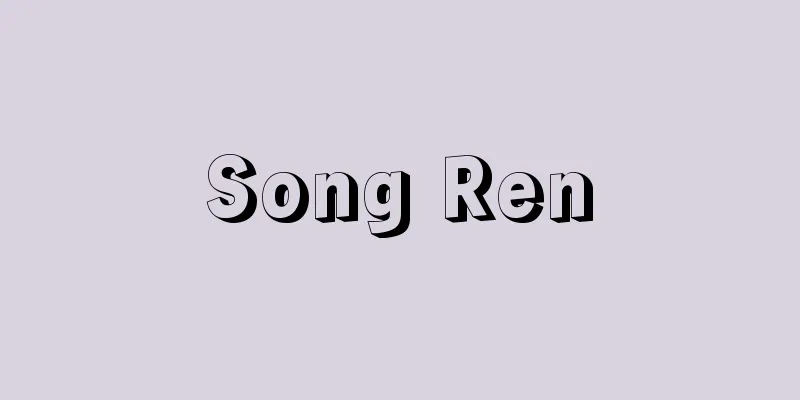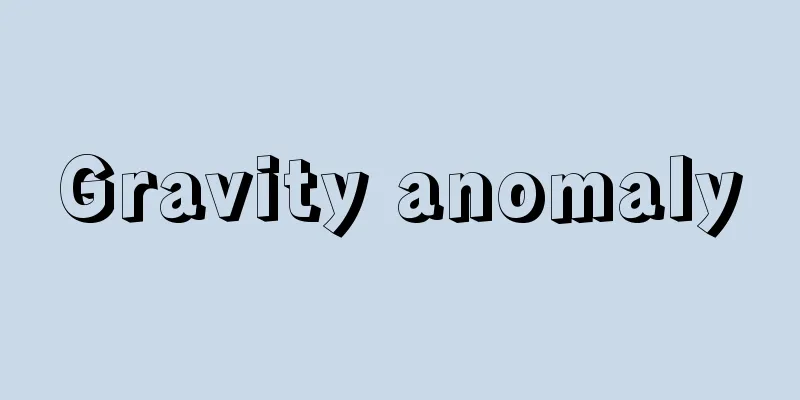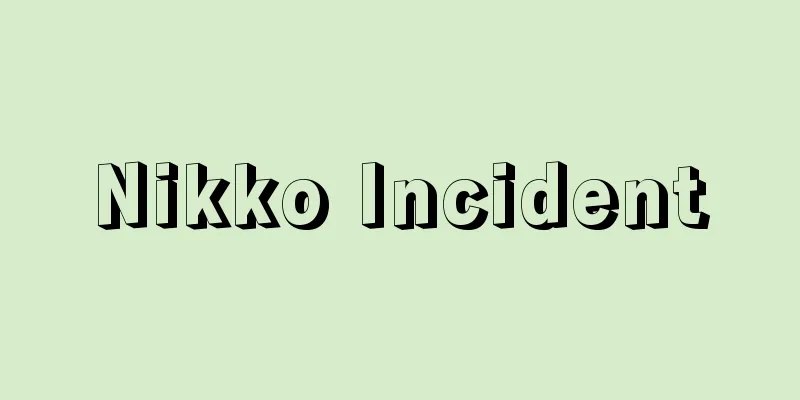Medical system - Iryoseido
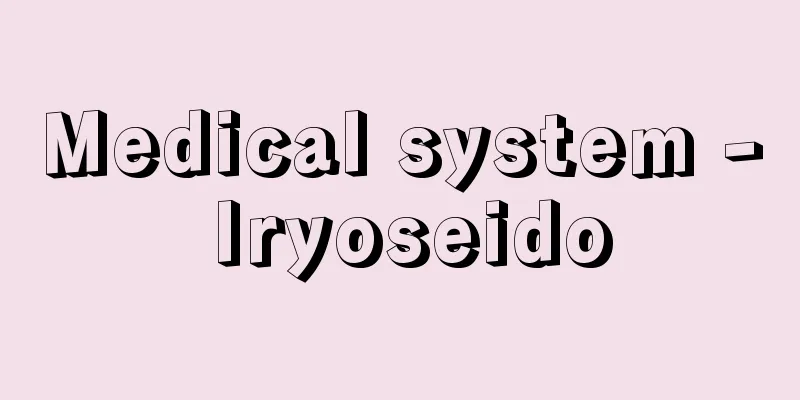
|
In a broad sense, it refers to all the social conditions that give a certain form to the practice of medicine in a society, and in a narrow sense, it refers to the conditions that are given administratively. In modern society, in order to give a certain form to the practice of medicine, it is necessary to make the regulatory power more certain, and the situation of administrative power has become larger accordingly. Especially after the Second World War, both in Japan and around the world, it has come to be considered the responsibility of the state and local governments to guarantee people's right to health, and administrative intervention has become stronger. In contrast, from the perspective of the traditional system, all issues related to medicine have been left to doctors, who are medical professionals, and in particular, this profession has been defined as a profession that autonomously regulates its professional standards and content, in other words, a free profession that dislikes outside interference. For this reason, as the regulatory power of the administration has been strengthened, there have been more and more aspects of lack of smoothness between the medical community and the medical community. Moreover, medicine, which should play a fundamental role in organically connecting these two, is essentially hampered by the uncertainty that comes from applying it to humans, who have particularly large individual differences, and the uncertainty that comes from the secrecy required to protect patients' privacy and calm their anxieties. Against this background, many countries are currently reviewing their systems, including solving problems with medical cost economics. In Japan, too, medical system reforms have been carried out under the Koizumi administration since the early 2000s, but medical problems are intertwined with many factors, and changing the system will bring about various new problems. Specific measures implemented include an increase in medical expenses for salaried workers (from 20% to 30%), an increase in out-of-pocket expenses for high-income earners aged 70 or older (from 20% to 30%), and a revision of medical fees. In 2008, the Late-stage Elderly Medical System was launched for people aged 75 or older. However, the serious situation in the medical field that has occurred since these reforms, which can be described as a medical collapse, has made the future direction of medical care all the more chaotic. [Yonezo Nakagawa and Akira Nakagawa] Medical FacilitiesThe basic medical facilities are clinics and hospitals. In the West, hospitals were established and developed with a social enterprise meaning, that is, with a public character, whereas in Japan, hospitals have developed without any particular public character, being distinguished only by the distinction of being a large-scale clinic. Therefore, in the West, hospitals and clinics have an organic relationship, and with the recent advancement of technology, it is easy to differentiate functions, whereas in Japan, the relationship between the two tends to be competitive. In recent years, the efficiency of the medical supply system has become an issue in Japan, and one of the solutions is to organize medical facilities into primary, secondary, and tertiary by region. In other words, primary is a relatively lightly equipped medical institution centered on a clinic, which deals with the illnesses of most patients, and when that is insufficient, secondary medical care, that is, small and medium-sized sanatoriums and hospitals, is in charge, and when the illness is particularly severe, treatment is provided by a hospital with specialized facilities and personnel. This is tertiary medical care. If the patient improves somewhat, a system is being considered and attempted whereby the patient would be sent back to secondary or primary care depending on the severity. However, in Japan, there is competition between medical facilities and patients tend to suddenly request tertiary care, making it difficult to organize. Reflecting this situation, the number of hospitals and hospital beds in Japan has been increasing rapidly in recent years, reaching one of the highest levels in the world when the population composition is taken into account. In particular, Japan is characterized by its slow development of intermediate facilities for long-term care for patients who do not require relatively intensive medical care. [Yonezo Nakagawa and Akira Nakagawa] Healthcare professionalsIn modern times, the demands on medical care are increasing in both quality and quantity. In particular, the relationship between medical care and health, welfare, education, etc. is deepening, so medical care is supported by people in a variety of professions. Traditional medical professionals were doctors, dentists, pharmacists, nurses, midwives, etc., but in 1969 (Showa 44) the Japan Medical Association Hospital Committee compiled a list of 30 types of professional occupations in the "Professional Occupations in Hospital Wards." In the United States, the scope is somewhat broader, as in "medical and health professionals," but the number of occupations is 230. Newly added medical professions are sometimes called paramedical staff to distinguish them from the traditional ones, but because "para" means "beside," the term is avoided, and they are often called co-medicals internationally. The Executive Committee of the World Health Organization (WHO) defines a co-medical professional as "any professional who works in a team with health care personnel to cooperate in medical care in the areas of nursing, midwifery, hygiene, veterinary medicine, pharmacy, physiotherapy, statistics, microbiology, etc." In addition to these co-medical professionals, Japan also has massage therapists, shiatsu therapists, acupuncturists, moxibustion therapists, and judo therapists, all of whom can independently apply their respective medical techniques and are legally defined as practitioners of medical-like practices. [Yonezo Nakagawa and Akira Nakagawa] Medical insuranceThe government's financial measures to provide medical care to the public are also called medical security. This consists of a portion related to medical expenses and a portion called injury and sickness allowance, which compensates for the income of the injured or sick person, with the former consisting of medical insurance (health insurance) and public medical care. Depending on the illness, the government may cover part or all of the medical expenses under medical and health policies, and this includes infectious diseases, sexually transmitted diseases, mental illnesses, tuberculosis, leprosy, pollution-related diseases, intractable diseases (specified diseases), and medical assistance under social welfare laws. The total amount spent by the entire public on treating injuries and illnesses in a year is called national medical expenses, but in reality it is an estimated combination of medical and health expenditures, the total amount of public medical care, partial payments, and private expenditures. [Yonezo Nakagawa and Akira Nakagawa] "An Introduction to Health Administration" by Hashimoto Masami (1961, Igaku Shoin)" ▽ "Lecture Series on Modern Medical Care and Medical Systems" by Kawakami Takeshi and Nakagawa Yonezo (1972, Nippon Hyoronsha)" ▽ "Prospects for Health in the 21st Century" by Otani Fujiro (1980, Medical Friend)" ▽ "Medical System Reform and the Function of Insurers" edited by Yamazaki Yasuhiko and Ogata Yuya (2003, Toyo Keizai Inc.) ▽ "What Japan's Medical System Reform Aims to Do" by Tsuji Tetsuo (2008, Jiji Press Publishing Bureau, Jiji Press)" ▽ "Medical Care in Japan and the United States - Systems and Ethics" edited by Sugita Yoneyuki (2008, Osaka University Press) ▽ "The Collapse of Medical Care - Adrift Patients, Exhausted Doctors" by Nakahara Hideomi and Okada Naoko (2008, PHP Institute)" ▽ "Annual Editions of the Medical White Paper (Japan Medical Planning)" ▽ "The Medical Care System for the Elderly: The Collapse of Social Security Beginning with the Elderly" by Shuhei Ito (Heibonsha Shinsho) [Reference items] | | | |Source: Shogakukan Encyclopedia Nipponica About Encyclopedia Nipponica Information | Legend |
|
広義には、その社会における医療の実践に一定の形式を与えるすべての社会的条件をいい、狭義には、行政的に与えられた条件をいう。近代社会では、医療の実践に一定の形式を与えるためには、規制力をより確実なものとする必要があり、それだけ行政権力による局面が大きくなっている。とくに第二次世界大戦後は、世界的にも、また日本においても、人々の健康権を保障することが、国や地方自治体の責任と考えられるようになったため、行政的な介入がますます強化されている。これに対して、伝統的な制度からみると、医療に関する問題は、すべて医療の専門職である医師にゆだねてきており、とくに、この専門職(プロフェッション)とは、定義上、自律的に職業基準や内容を規制するもの、つまりは外部からの干渉を嫌う自由業とされてきた。このため、行政側の規制力の強化に伴って、医師集団との間に円滑さを欠く面が増大してきた。しかも、この両者を有機的に関連させるために基本的な役割を担うべき医学が、本質的には、個体差がとくに甚だしい人間に適用されることからくる不確実性と、現実的には、患者のプライバシーを守るためや不安を鎮めるために要求される秘密主義に由来する不確実性をもっているという障壁によって、有効に機能しがたいという事情があった。こうした背景をもとに、いま多くの国では、医療費経済での問題解決を含めて、制度の見直しが進行中である。日本でも、2000年代初頭より医療制度改革が小泉政権の下で行われてきたが、医療問題は多くの因子が絡んでおり、制度を変更することでさまざまな新しい問題が浮上してくる。具体的に行われたことは、サラリーマンの医療費負担の増額(2割から3割)、70歳以上の高所得者の窓口負担の増額(2割から3割)、診療報酬の改訂などが含まれる。また2008年(平成20)には75歳以上の高齢者を対象とした後期高齢者医療制度が発足している。しかし、これらの改革以後に起こった医療崩壊ということばでも表わされる医療現場での深刻な状況は、今後の医療の方向性をますます混沌とさせているといわざるをえない。 [中川米造・中川 晶] 医療施設基本的な医療施設は診療所と病院である。欧米の場合、病院は社会事業的意味をもって、つまり公的な性格を付されて発足し、発展してきたのに対して、日本の場合、病院は診療所の規模の大きいものという区別だけで、とくに公的な性格はないままに発展してきた。したがって欧米の場合、病院と診療所は有機的な関係をもち、最近のように技術化が進行した場合、機能分化が容易であるのに対して、日本の場合は、両者が競合するという関係になりやすい。近年、日本でも医療の供給体制の効率化が問題にされ、その一つの解決法として、地域ごとに医療施設を第一次、第二次、第三次と区分して組織することが考えられている。すなわち、第一次とは、診療所を主体とした比較的軽装備の医療機関で、大部分の病人の病気に対処し、それで不十分な場合、第二次医療つまり中小規模の療養所や病院で受け持たせ、とくに重症の場合は、設備・人員ともに専門化した病院で診療をさせる。これが第三次医療である。ここで多少軽快すると、程度に応じて、第二次、第一次に返すという運用が考えられ、かつ実施されようとしている。しかし日本の場合は、医療施設の間に競合があり、また患者がいきなり第三次医療を要求する傾向もあって、組織化に困難なのが実情である。 このような状態を反映して、最近日本では病院、病床数が急速に増加しており、人口構成を考慮すると、世界のトップレベルに達している。とくに日本では、比較的濃厚な医療を要しない病人を対象とした、長期療養のための中間的施設の発展が遅れている、というのが特徴である。 [中川米造・中川 晶] 医療従事者現代は、医療に要求される局面が、質・量ともに増している。とくに医療と保健、福祉、教育などとの関係も深まっているために、多様な職種の人々によって支えられている。古典的な医療従事者は、医師、歯科医師、薬剤師、看護婦(師)、助産婦(師)などであったが、1969年(昭和44)日本医師会病院委員会がまとめた「病棟における専門職」には、30種を数える職種があげられている。アメリカでは、「医療保健職」というように、やや範囲を広くとっているが、その職種は230種を数えている。新しく加わった医療職種は、古典的なそれと区別するためにパラメディカル・スタッフとよばれることがあるが、「パラ」には「~のかたわらで」という意味があるため使用を避け、国際的にはコ・メディカルとよばれる場合が多い。世界保健機関(WHO)の実行委員会は、コ・メディカルを「保健要員とチームをつくり、看護、助産、衛生、獣医、薬局、理学療法、統計、微生物学などで、医療に協力するすべての職能者」と定義している。日本ではこれらのコ・メディカルのほかに、あんま、マッサージ、指圧師、はり師、きゅう師、柔道整復師などがあるが、これらは、独立してそれぞれの療術を適用することができ、法律上は医業類似行為者と規定されている。 [中川米造・中川 晶] 医療保障国民に医療を給付するための国の財政的措置を医療保障ともいう。これは、診療費に関する部分と、傷病者の所得を補填(ほてん)する部分である傷病手当金とからなり、前者は医療保険(健康保険)と公費医療から構成される。病気によっては、医療保健政策上、国が治療費の一部あるいは全部を負担する場合があり、感染症、性感染症、精神病、結核、ハンセン病、公害病、難病(特定疾患)などのほか、社会福祉に関する法律による医療扶助などがこれに含まれる。なお、国民全体が傷病治療のために1年間に支出する費用の総額を国民医療費というが、実際には、医療保健による支出、公費医療の総額、一部負担、私費支出を推計合算したものである。 [中川米造・中川 晶] 『橋本正巳著『衛生行政序説』(1961・医学書院)』▽『川上武・中川米造著『講座現代の医療と医療制度』(1972・日本評論社)』▽『大谷藤郎著『21世紀健康への展望』(1980・メヂカルフレンド社)』▽『山崎泰彦・尾形裕也編著『医療制度改革と保険者機能』(2003・東洋経済新報社)』▽『辻哲夫著『日本の医療制度改革がめざすもの』(2008・時事通信出版局、時事通信社発売)』▽『杉田米行編『日米の医療――制度と倫理』(2008・大阪大学出版会)』▽『中原英臣・岡田奈緒子著『医療破綻――漂流する患者、疲弊する医者』(2008・PHP研究所)』▽『『医療白書』各年版(日本医療企画)』▽『伊藤周平著『後期高齢者医療制度――高齢者からはじまる社会保障の崩壊』(平凡社新書)』 [参照項目] | | | |出典 小学館 日本大百科全書(ニッポニカ)日本大百科全書(ニッポニカ)について 情報 | 凡例 |
>>: Medical juvenile detention center - Iryo Shounenin
Recommend
logical formula
…The axioms of logic are the axiomatic system of ...
Kinyukai - Kinyukai
...At first, the number of members was just over ...
Beers (English spelling) Clifford Whittingham Beers
1876‐1943 American mental health activist. Born in...
Wonsan General Strike - Gensan General Strike
A general strike by dock workers broke out in Wons...
Troll
A spirit that appears in Norse mythology and folk ...
Strangeness - Sutorenginesu (English spelling) strangeness
It is one of the quantum numbers that characteriz...
Stereotypy
Symptoms of repeated, sustained, specific behavior...
Nagoya Geni - Nagoya Geni
A doctor in the early Edo period. Born in Kyoto. ...
Grimm's Law
The German linguist and narrator Jacob Grimm esta...
"Dancing New York" - Odorudainyuuk
...During wartime, musical films became a kind of...
Takaono [town] - Takaono
A former town in Izumi County in the northwest of ...
invention
…From this, in Japan, it came to mean a remarkabl...
Company people - Shayozoku
( Noun ) (A word derived from the word "shayo...
Aupanishadha - Aupanishadha
...In Sanskrit, it is called Vedāntavāda. Vedānta...
Liver fortune telling - Kanzourarunai
…The livers of various animals have been studied ...
